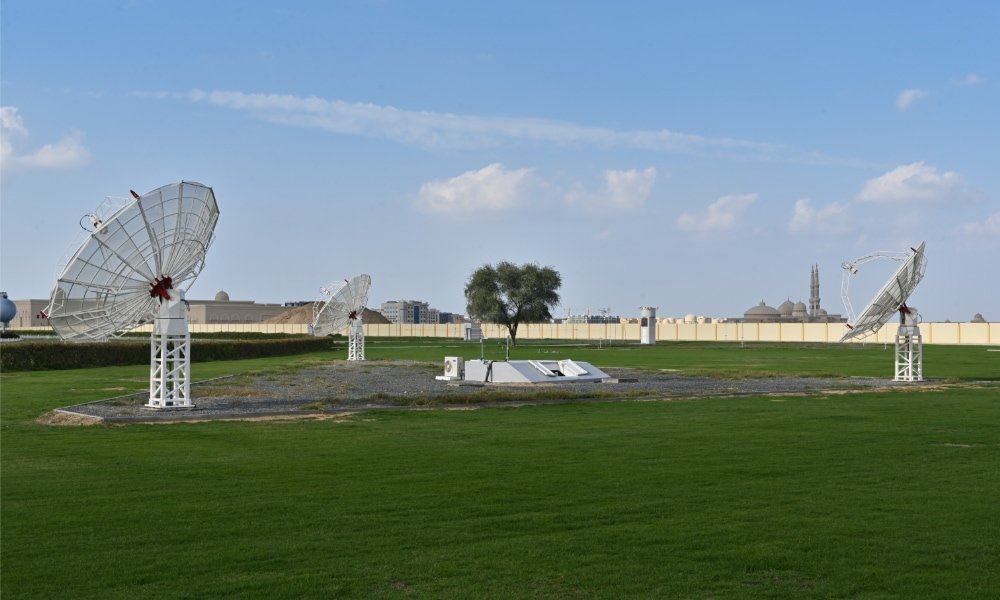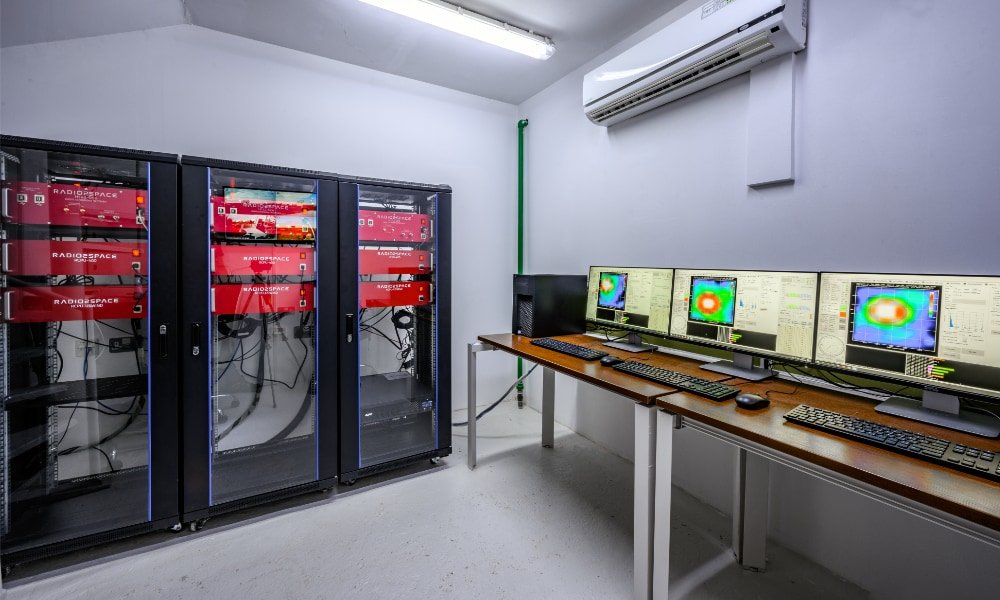Affordable radio interferometry
Radio interferometry is the technique used by professional radio astronomers to create a single large radio telescope using multiple smaller antennas. Radio interferometry allows radio astronomers to obtain radio pictures with higher angular resolution, but up until now this technique has been used only in very expensive research instruments….
Today we present our next challenge – To develop the first affordable radio interferometry system for radio astronomy with SPIDER radio telescopes!
Radio interferometry and angular resolution
Exploring the Universe by means of detecting radio waves has many advantages, like performing radio astronomy during daytime and in adverse weather conditions. However, since the angular resolution of a telescope is directly proportional to the wavelength, a radio telescope has an angular resolution much smaller than an optical telescope. For example, the angular resolution is calculated by this formula:
θ = 2.5 x 105 * (λ/D)
where θ is in arcseconds and λ (wavelength) and D (telescope diameter) are in meters.
Considering an optical telescope with 50cm diameter (0.5m) with medium value of 550nm of λ (5,5×10-7 m), the theoretical angular resolution is:
θ = 2.5 x 105 * (5.5×10-7 / 0,5) = 0.275 arcseconds
If we want to have the same angular resolution with a radio telescope recording 21cm wave length, we’ll need to solve this equation:
0.275 arcseconds = 2.5 x 105 * (0.21 m /D)
And this bring us to a diameter of 190909 meters. This means, in order for a radio telescope to have the same angular resolution of a 50cm optical telescope, the antenna would need to be 191 km in diameter, far too large to actually build! However, by using radio interferometry we can effectively create a single telescope as large as the distance between the two farthest radio telescopes composing the array.

Affordable radio interferometry with compact radio telescopes
Many radio telescopes are designed as an array of more compact antennas instead of a single massive instrument. Examples can be found at the new Atacama Large Millimeter Array (ALMA) in Chile, composed of many 7 and 12 meter diameter antennas as well as the Very Large Array (VLA) in New Mexico (USA) that uses 27 antennas, each 25 meters diameter. SPIDER radio telescopes use smaller antennas, with diameters ranging from 2.3 to 5 meters – This is one of the reasons that makes the SPIDER so affordable, even within the reach of schools, universities or a science museum budget.
As you begin building an antenna with a diameter larger than the 5 meter model used in the SPIDER 500A, the costs of the radio telescope increase dramatically due to the massive mount that would be required not only to precisely move such an antenna (precise movement is critical in radio astronomy applications) but to also safely handle any adverse weather conditions, like the more compact SPIDER radio telescopes. When we studied the possibility of developing a larger radio telescope, we found that the manufacturing costs of a 8 meter model would be more than 3 times that of the SPIDER 500A radio telescope… Clearly radio interferometry is the solution.

When we developed the SPIDER line of radio telescopes, we brought to market the first line of affordable, professional, compact radio telescopes developed specifically for radio astronomy. Now we want to extend this development to radio interferometry to create complete arrays of radio telescopes, allowing you to do radio interferometry with ready-to-use SPIDER systems! In order to accomplish this, there are different goals we will need to meet:
- Development of a Fiber Optic Device that, by replacing standard RF cables, will maximize the signal from the compact antennas capable of sending data over medium/long distances between the LNA and the receiver, allowing flexibility in the interferometer design.
- Development of the BKND-Pro Professional Backend that, not only will provide very high spectral resolution for single dish radio astronomy and SETI applications, but it will also be designed to sample the signal in the time domain in preparation for data correlation from multiple SPIDER telescopes.
- Development a Synchronization Device for the different clocks of the radio telescopes and for the acquisition system.
- Development of the Correlator that will acquire data coming from the different SPIDER radio telescopes and merge all of the signals to create a single high resolution radio map of the Universe.
We’ll publish all these developments on our website so please subscribe to our newsletter or to our Social Media channels to be sure and get the latest updates!
If you like to know more about our affordable radio interferometry system for SPIDER radio telescopes, contact us. |
.
